Abstract
This paper reviews progress since the author's previous writings in three areas. In escape training, the preparatory-response explanation of bar holding still appears to be valid. In avoidance, the newer safety-signal version of two-factor theory has much to recommend it and readily incorporates Anger's conditioned aversive temporal stimuli formulation. Shock-density reduction is rejected as a substitute for two-factor theory. Finally, criticisms of the avoidance interpretation of punishment are answered and recent empirical data are cited in its support.
Full text
PDF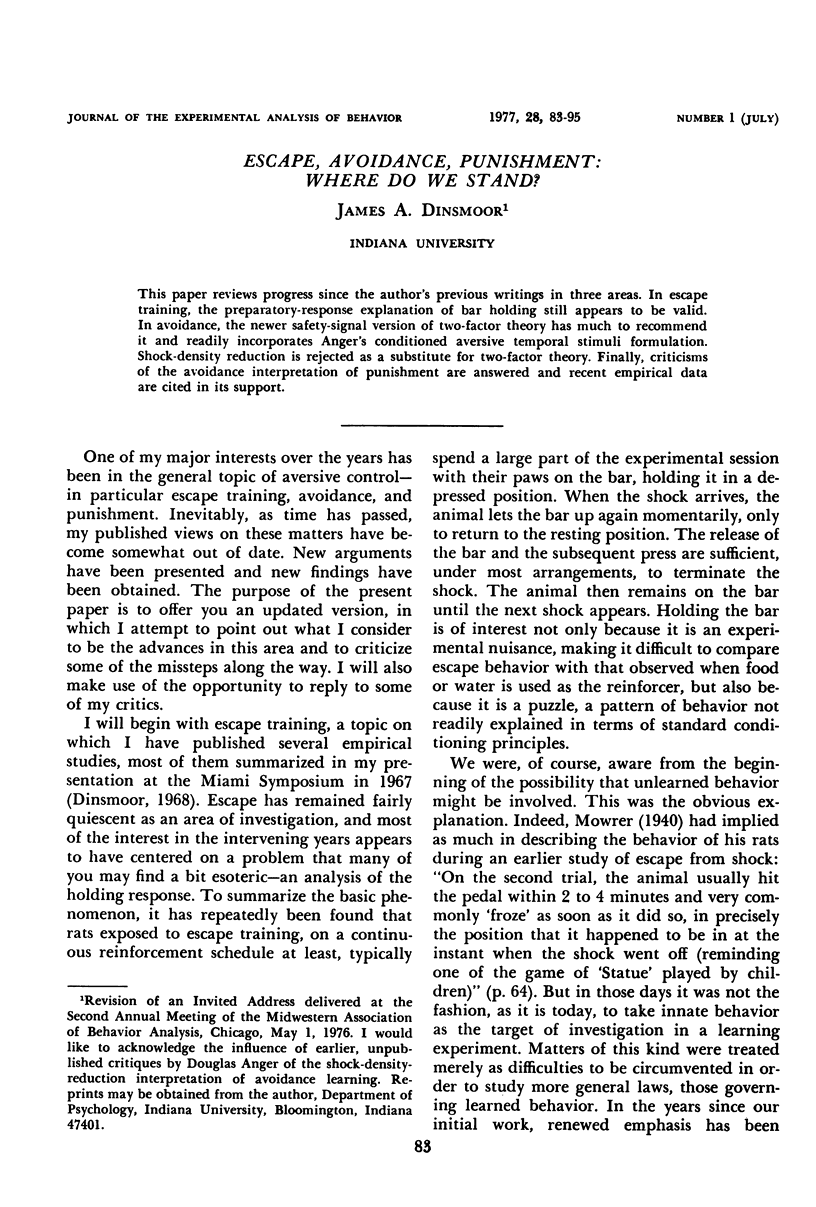
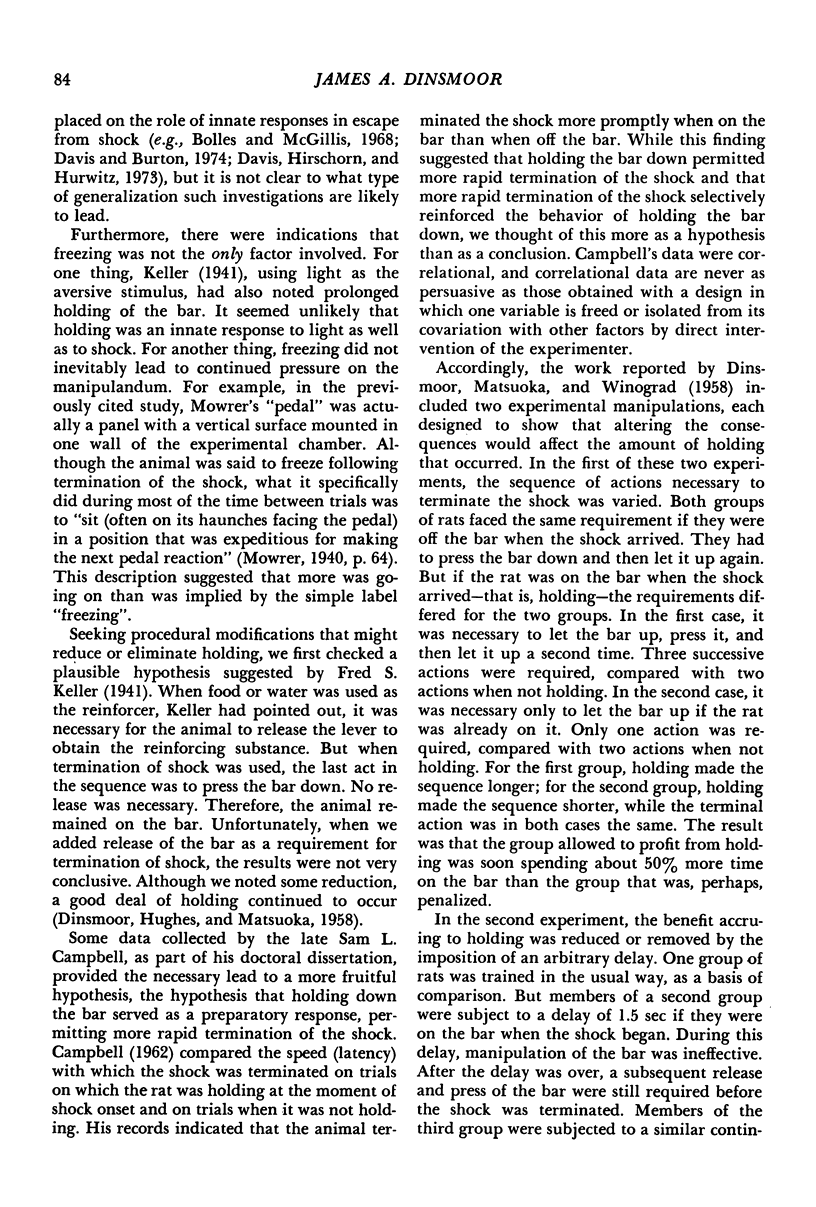
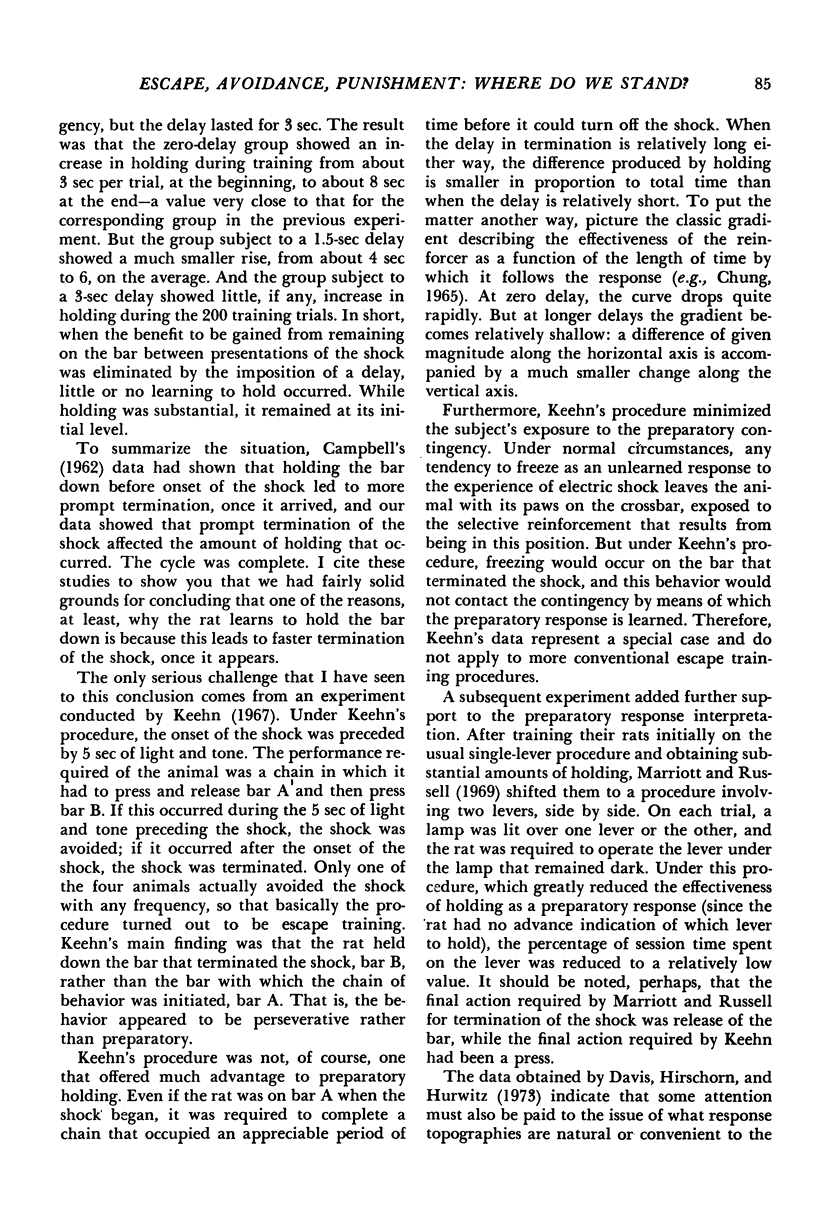
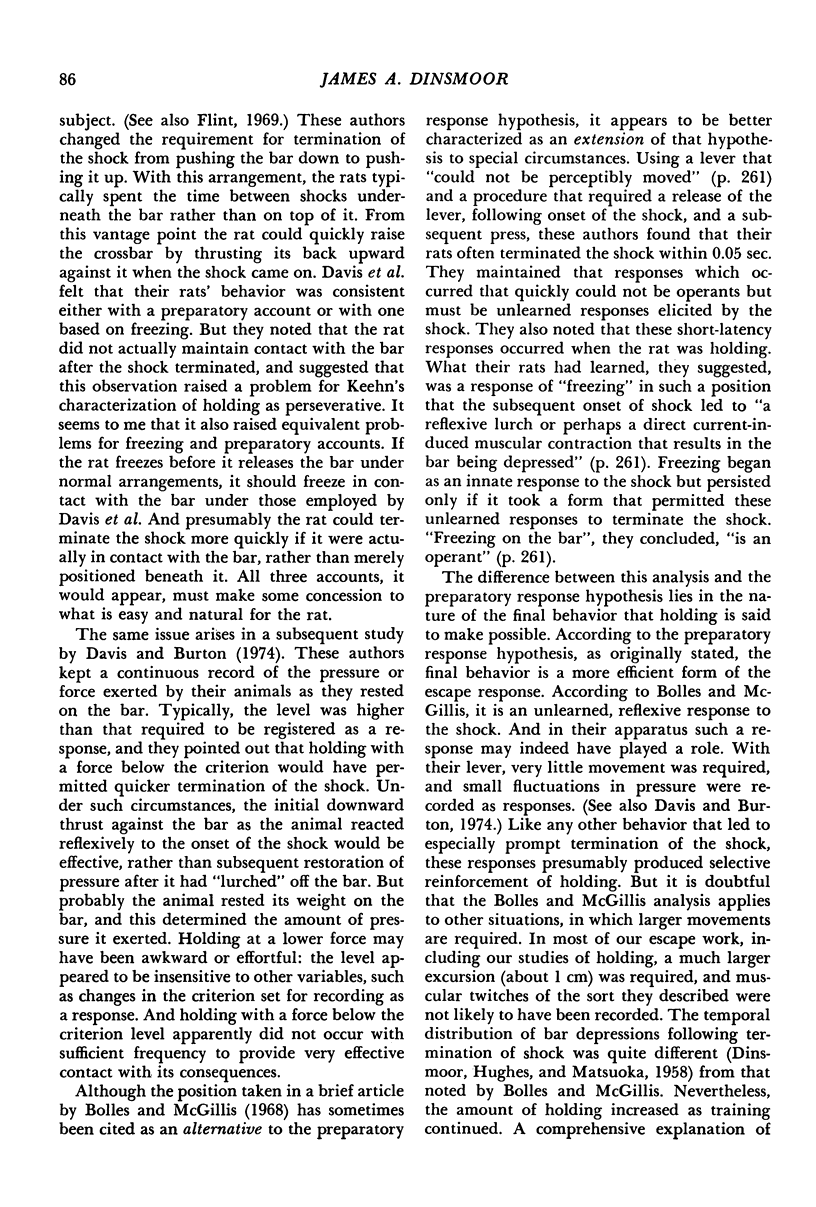
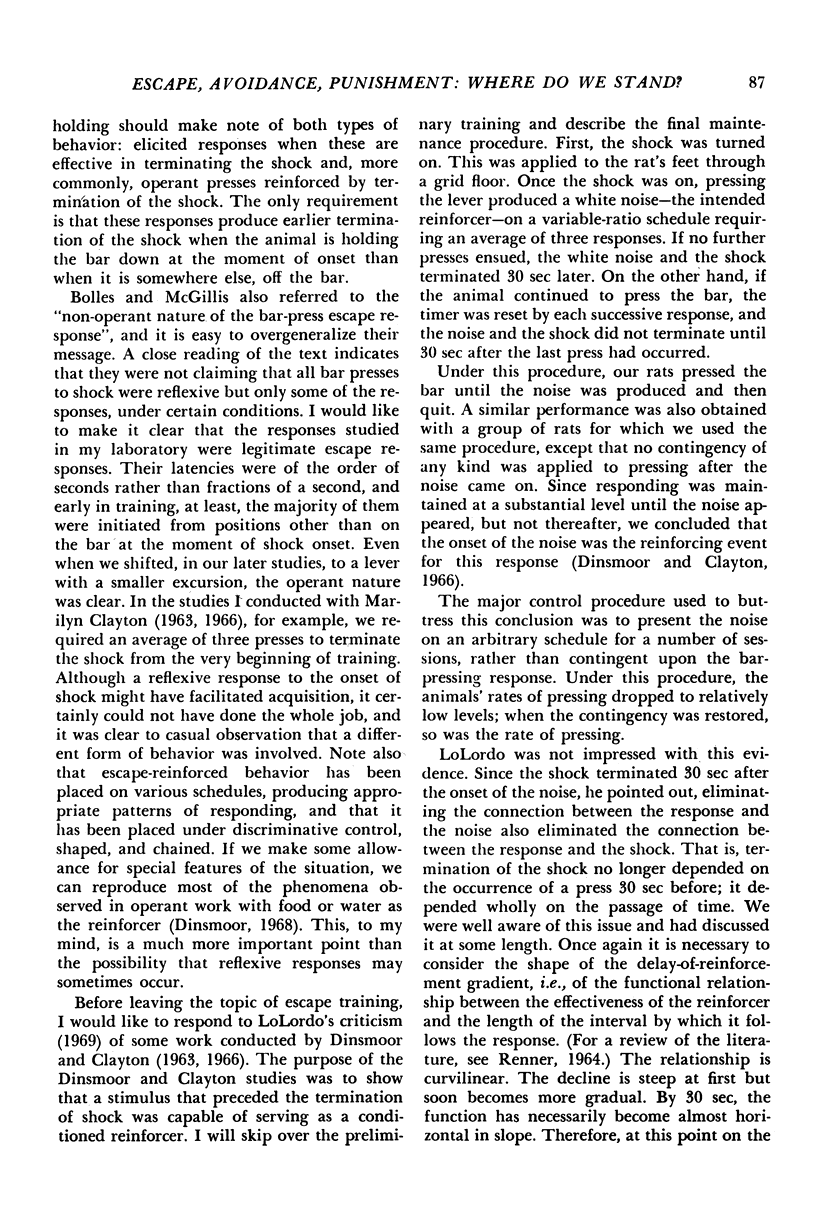
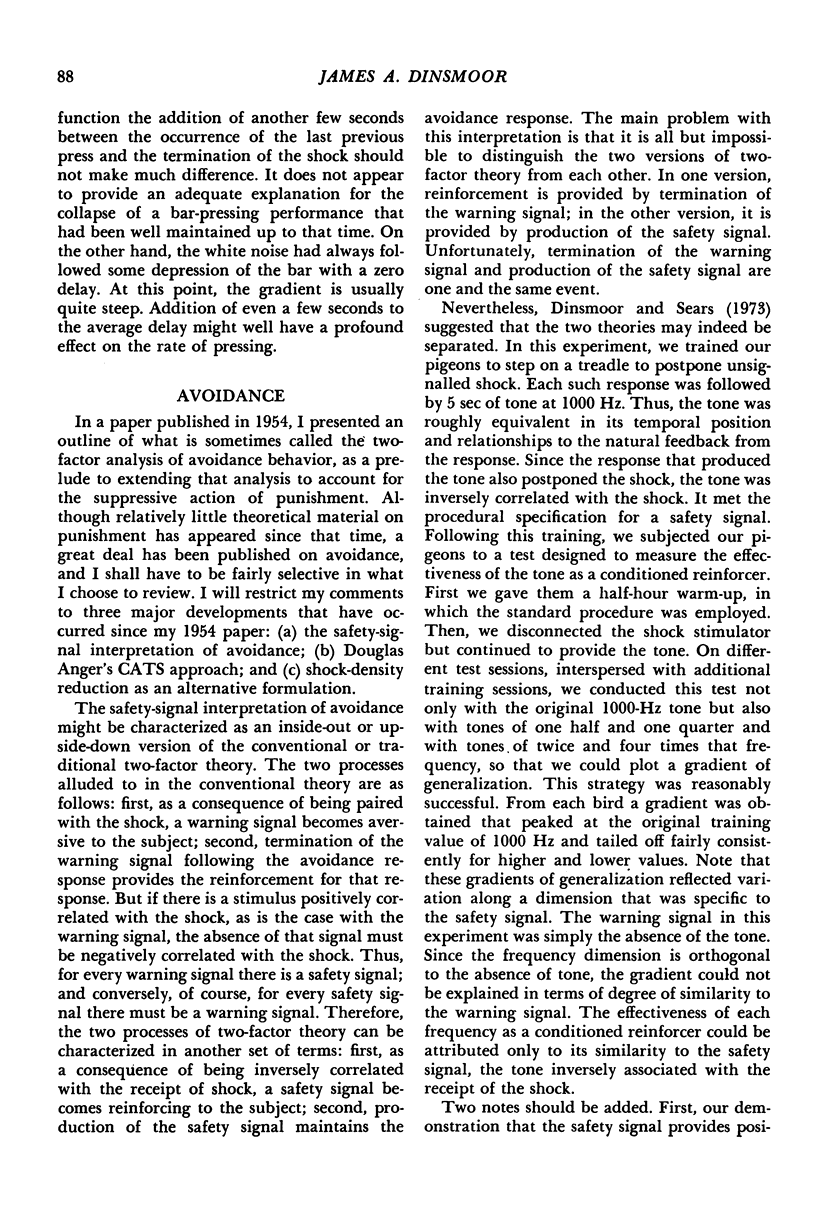
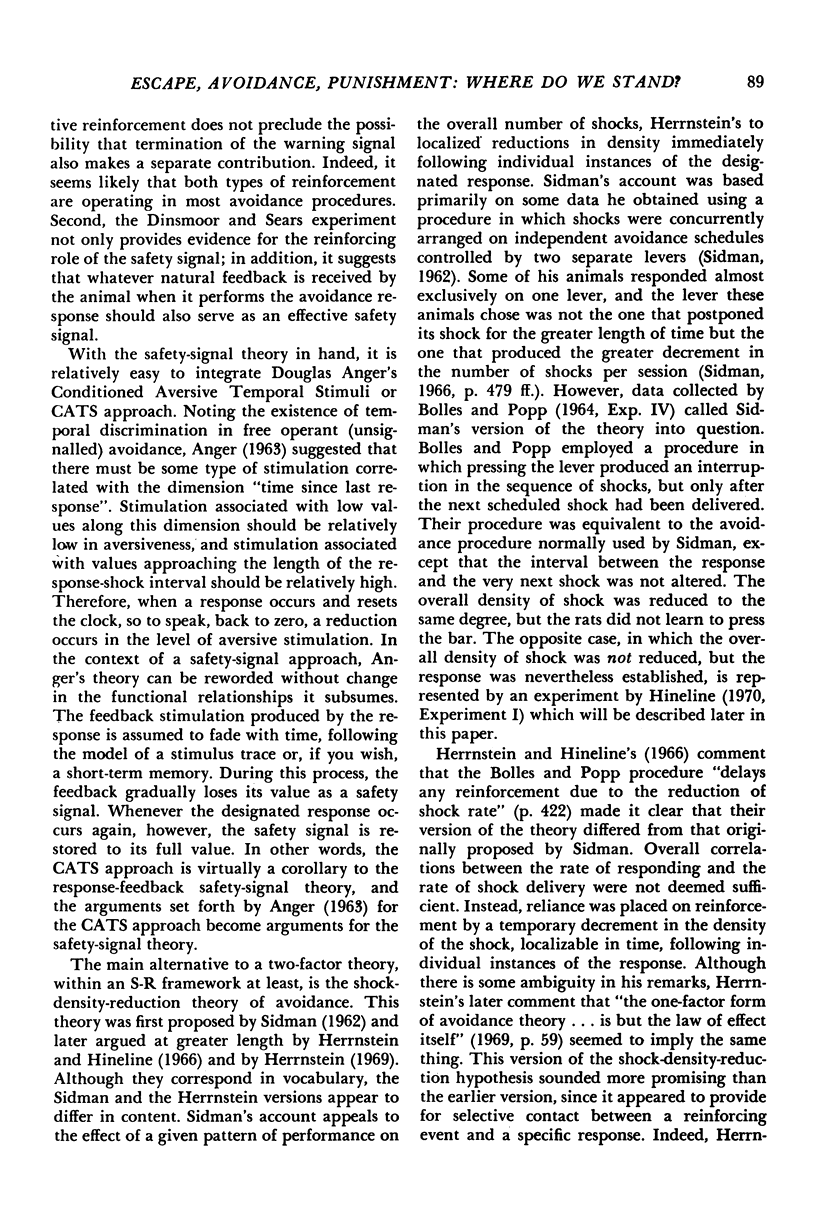
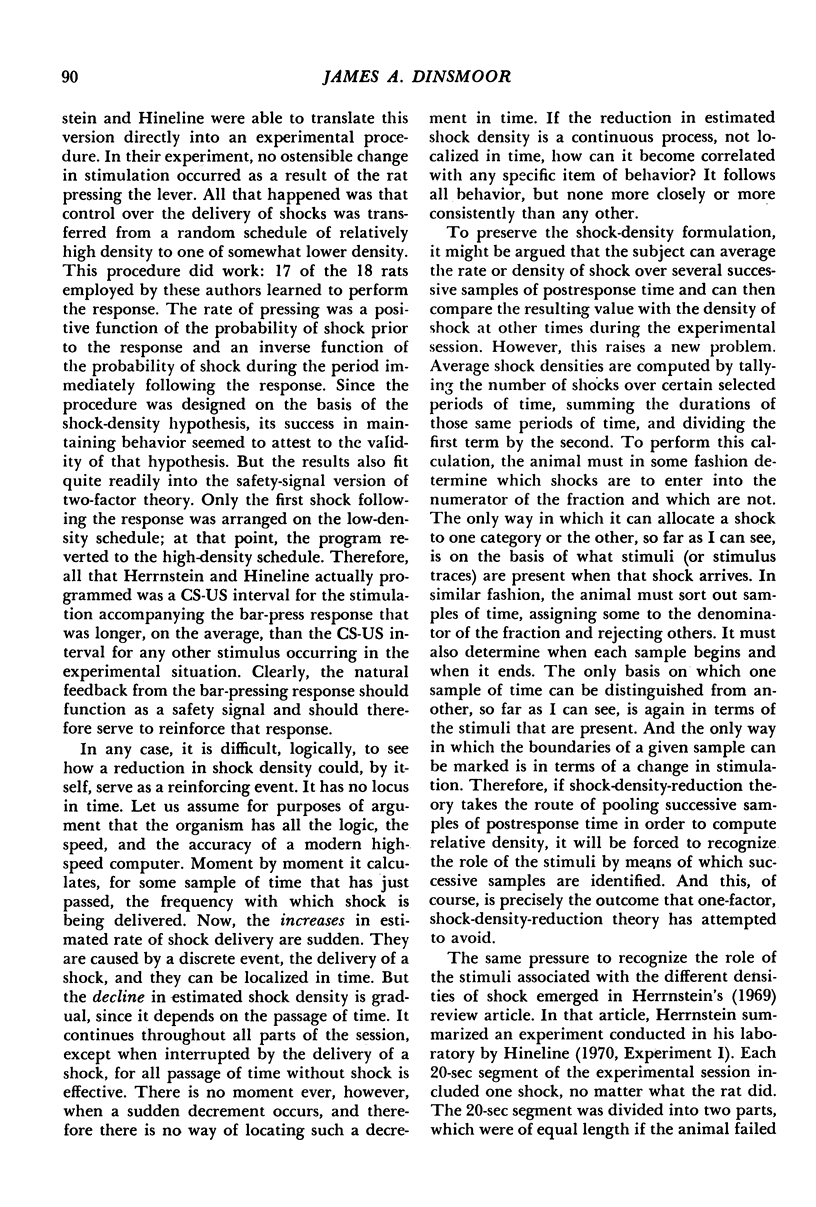
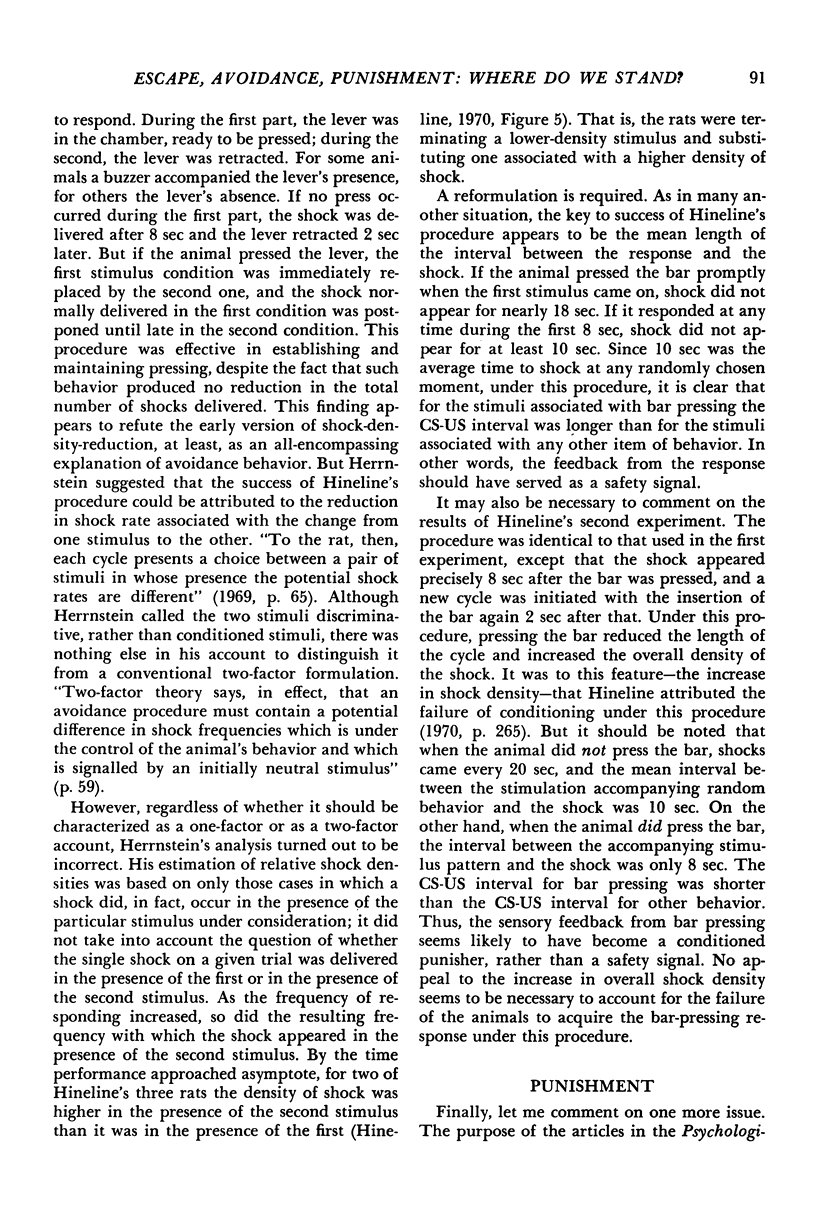
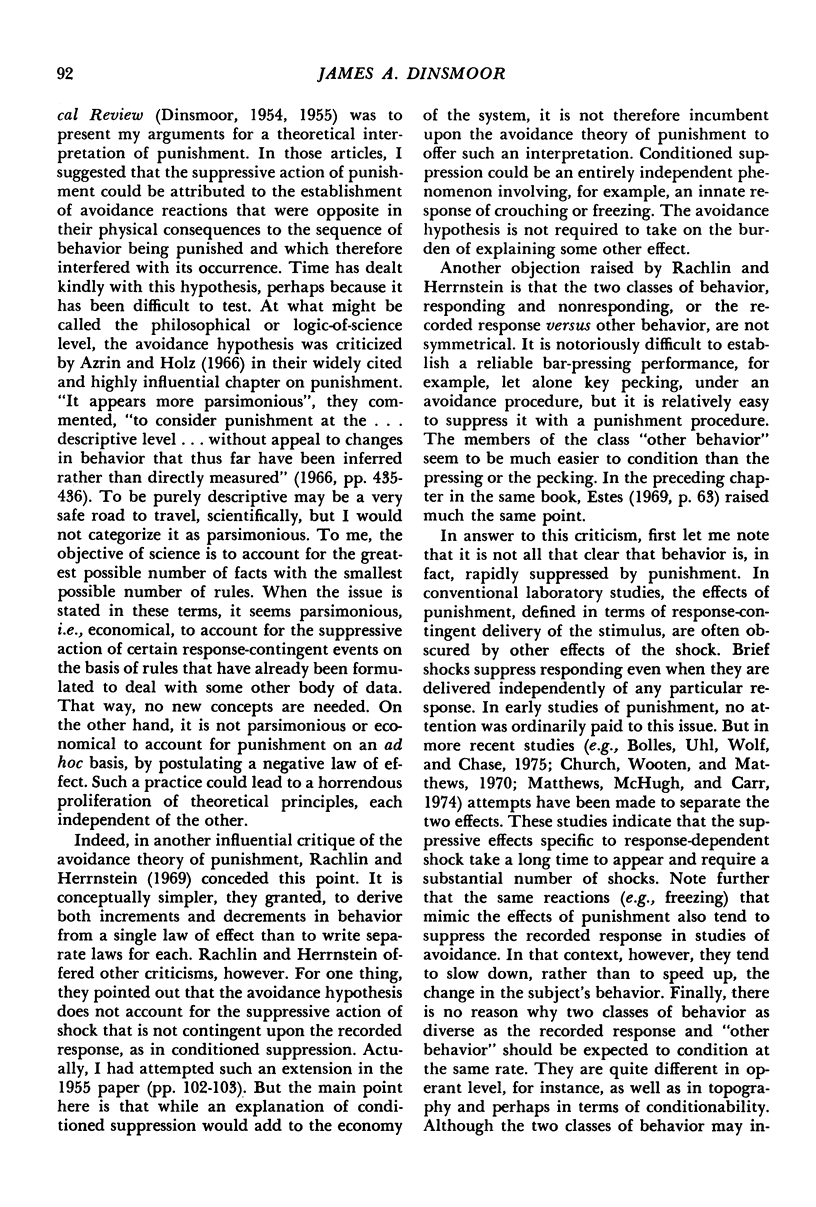
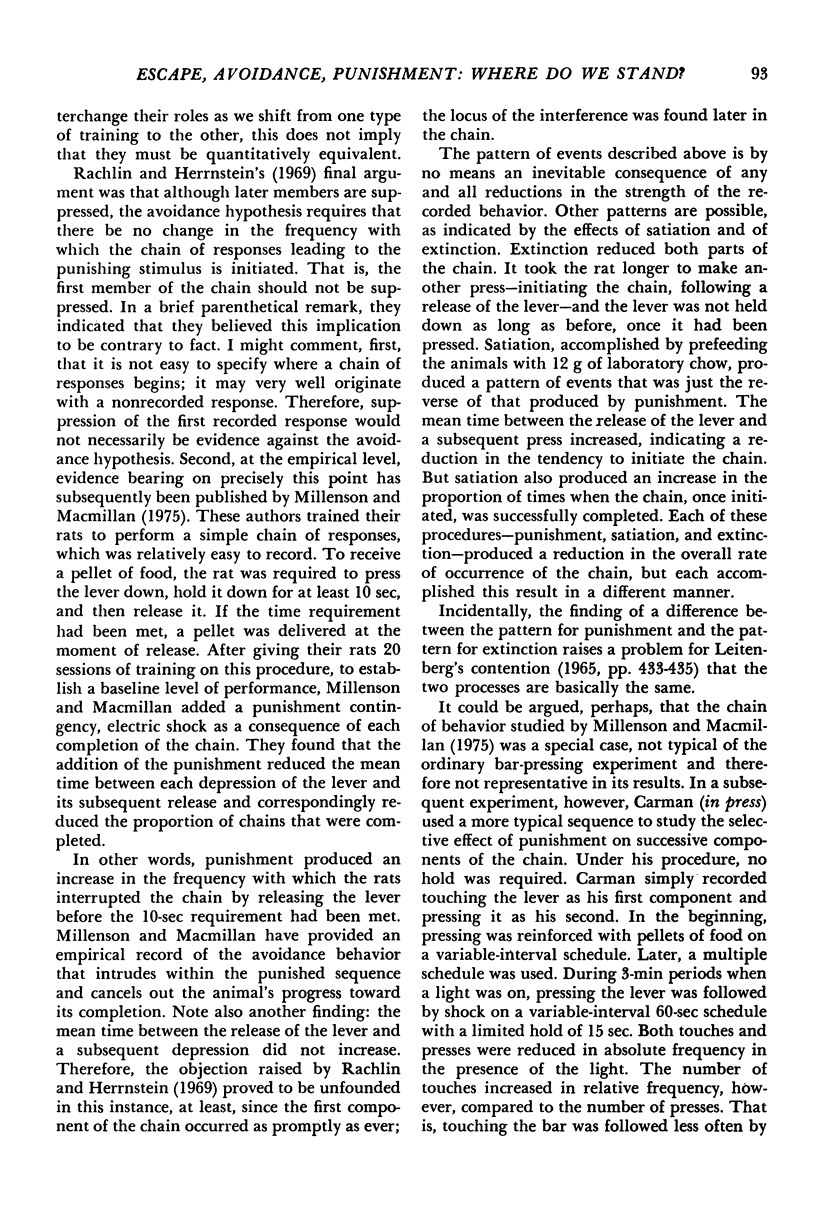
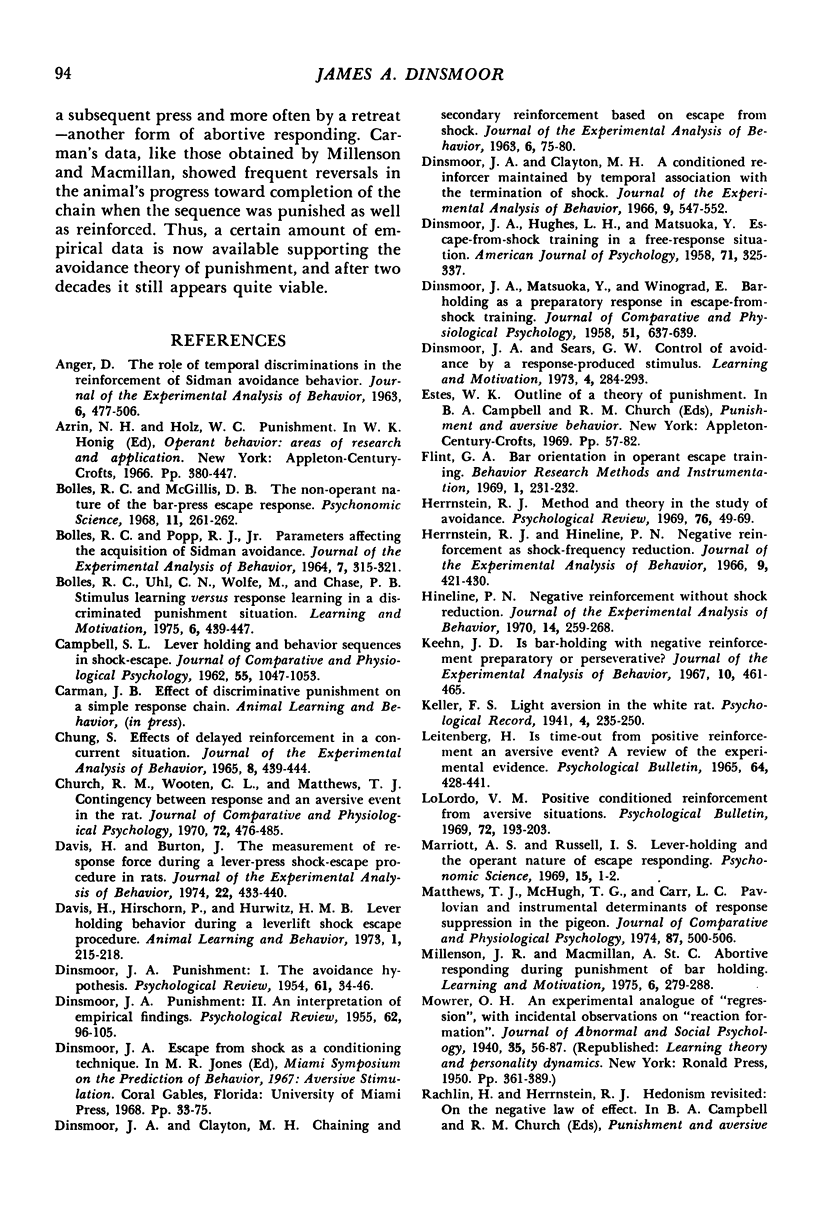
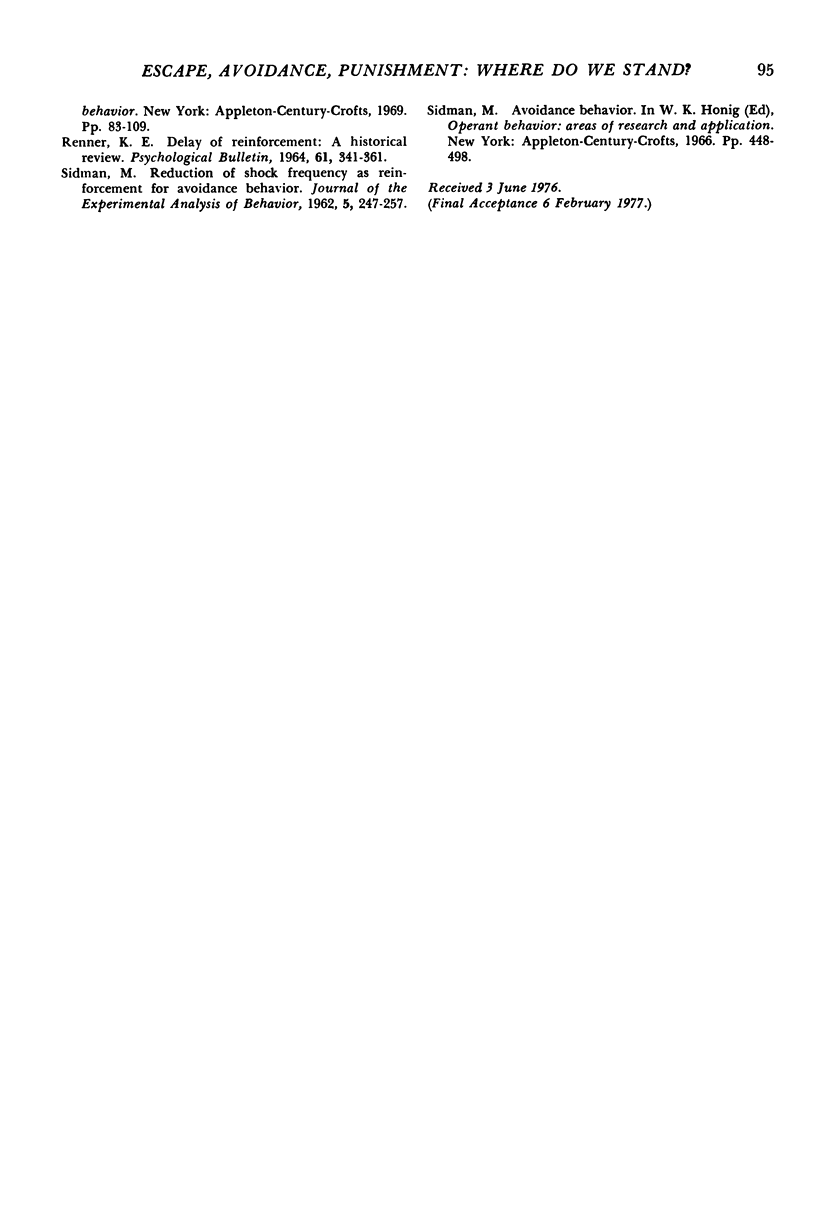
Selected References
These references are in PubMed. This may not be the complete list of references from this article.
- ANGER D. The role of temporal discriminations in the reinforcement of Sidman avoidance behavior. J Exp Anal Behav. 1963 Jul;6(3):477–506. doi: 10.1901/jeab.1963.6-s477. [DOI] [PMC free article] [PubMed] [Google Scholar]
- BOLLES R. C., POPP R. J., Jr PARAMETERS AFFECTING THE ACQUISITION OF SIDMAN AVOIDANCE. J Exp Anal Behav. 1964 Jul;7:315–321. doi: 10.1901/jeab.1964.7-315. [DOI] [PMC free article] [PubMed] [Google Scholar]
- CAMPBELL S. L. Lever holding and behavior sequences in shock-escape. J Comp Physiol Psychol. 1962 Dec;55:1047–1053. doi: 10.1037/h0045663. [DOI] [PubMed] [Google Scholar]
- Chung S. H. Effects of delayed reinforcement in a concurrent situation. J Exp Anal Behav. 1965 Nov;8(6):439–444. doi: 10.1901/jeab.1965.8-439. [DOI] [PMC free article] [PubMed] [Google Scholar]
- DINSMOOR J. A., CLAYTON M. H. Chaining and secondary reinforcement based on escape from shock. J Exp Anal Behav. 1963 Jan;6:75–80. doi: 10.1901/jeab.1963.6-75. [DOI] [PMC free article] [PubMed] [Google Scholar]
- DINSMOOR J. A., HUGHES L. H., MATSUOKA Y. Escape-from-shock training in a free-response situation. Am J Psychol. 1958 Jun;71(2):325–337. [PubMed] [Google Scholar]
- DINSMOOR J. A., MATSUOKA Y., WINOGRAD E. Bar-holding as a preparatory response in escape-from-shock training. J Comp Physiol Psychol. 1958 Oct;51(5):637–639. doi: 10.1037/h0047950. [DOI] [PubMed] [Google Scholar]
- DINSMOOR J. A. Punishment. I. The avoidance hypothesis. Psychol Rev. 1954 Jan;61(1):34–46. doi: 10.1037/h0062725. [DOI] [PubMed] [Google Scholar]
- DINSMOOR J. A. Punishment. II. An interpretation of empirical findings. Psychol Rev. 1955 Mar;62(2):96–105. doi: 10.1037/h0041258. [DOI] [PubMed] [Google Scholar]
- Davis H., Burton J. A. The measurement of response force during a lever-press shock-escape procedure in rats. J Exp Anal Behav. 1974 Sep;22(2):433–440. doi: 10.1901/jeab.1974.22-433. [DOI] [PMC free article] [PubMed] [Google Scholar]
- Dinsmoor J. A., Clayton M. H. A conditioned reinforcer maintained by temporal association with the termination of shock. J Exp Anal Behav. 1966 Sep;9(5):547–552. doi: 10.1901/jeab.1966.9-547. [DOI] [PMC free article] [PubMed] [Google Scholar]
- Herrnstein R. J., Hineline P. N. Negative reinforcement as shock-frequency reduction. J Exp Anal Behav. 1966 Jul;9(4):421–430. doi: 10.1901/jeab.1966.9-421. [DOI] [PMC free article] [PubMed] [Google Scholar]
- Herrnstein R. J. Method and theory in the study of avoidance. Psychol Rev. 1969 Jan;76(1):49–69. doi: 10.1037/h0026786. [DOI] [PubMed] [Google Scholar]
- Hineline P. N. Negative reinforcement without shock reduction. J Exp Anal Behav. 1970 Nov;14(3):259–268. doi: 10.1901/jeab.1970.14-259. [DOI] [PMC free article] [PubMed] [Google Scholar]
- Keehn J. D. Is bar-holding with negative reinforcement preparatory or perseverative. J Exp Anal Behav. 1967 Sep;10(5):461–465. doi: 10.1901/jeab.1967.10-461. [DOI] [PMC free article] [PubMed] [Google Scholar]
- Leitenberg H. Is time-out from positive reinforcement an aversive event? A review of the experimental evidence. Psychol Bull. 1965 Dec;64(6):428–441. doi: 10.1037/h0022657. [DOI] [PubMed] [Google Scholar]
- Lolordo V. M. Positive conditioned reinforcement from aversive situations. Psychol Bull. 1969 Sep;72(3):193–203. doi: 10.1037/h0027907. [DOI] [PubMed] [Google Scholar]
- Matthews T. J., McHugh T. G., Carr L. D. Pavlovian and instrumental determinants of response suppression in the pigeon. J Comp Physiol Psychol. 1974 Sep;87(3):500–506. doi: 10.1037/h0036992. [DOI] [PubMed] [Google Scholar]
- RENNER K. E. DELAYED OF REINFORCEMENT: A HISTORICAL REVIEW. Psychol Bull. 1964 May;61:341–361. doi: 10.1037/h0048335. [DOI] [PubMed] [Google Scholar]
- SIDMAN M. Reduction of shock frequency as reinforcement for avoidance behavior. J Exp Anal Behav. 1962 Apr;5:247–257. doi: 10.1901/jeab.1962.5-247. [DOI] [PMC free article] [PubMed] [Google Scholar]


